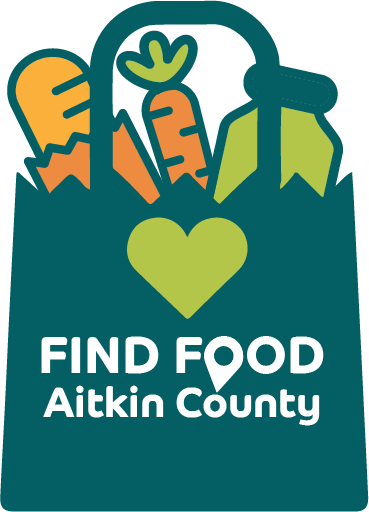Key Nutrients Ages 1 – 5
Milk plays a critical role in the diet of young children aged 1 to 5 years, providing essential nutrients necessary for growth, development, and overall health. The key nutrients found in milk include:
- Calcium: Supports strong bones and teeth development.
- Vitamin D: Works with calcium to enhance bone health and immune function.
- Protein: Essential for growth, tissue repair, and muscle development.
- Fats: Vital for brain development, energy, and the absorption of fat-soluble vitamins (A, D, E, and K).
- Vitamin A: Promotes eye health, immune function, and skin health.
- B Vitamins (Riboflavin, B12): Help convert food into energy and support the nervous system.
- Phosphorus: Works with calcium to build strong bones and teeth.
- Potassium: Maintains fluid balance and helps with muscle and nerve function
Snapshot of Milk Options and Their Nutritional Benefits
Below is a breakdown of various milk and milk alternatives, along with the nutrients they provide:

Cow's Milk
- What It Is: Milk produced by cows, the most common type of milk consumed globally.
- Nutrients: High in calcium, protein, phosphorus, potassium, vitamin B12, vitamin D (if fortified), and fat (whole milk).
- Options: Whole (full-fat), 2%, 1%, and skim (fat-free).
- Notes: Whole milk is recommended for ages 1-2 due to its fat content for brain development.
Goat Milk

- What It Is: Milk from goats, often easier to digest for some children due to its protein structure.
- Nutrients: Comparable to cow’s milk in calcium, protein, and vitamins A and B2. It naturally contains less lactose.
- Notes: Should be fortified with vitamin D to meet daily requirements.
Pea Milk
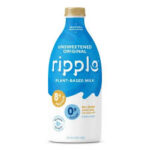
- What It Is: Plant-based milk made from yellow peas.
- Nutrients: High in protein (similar to cow’s milk), calcium (if fortified), iron, and omega-3 fatty acids.
- Notes: A good option for children with allergies to dairy, nuts, and soy.
Soy Milk
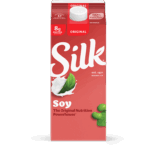
- What It Is: Plant-based milk made from soybeans.
- Nutrients: High in protein, calcium (if fortified), vitamin D (if fortified), and potassium.
- Notes: Nutritionally closest to cow’s milk and a suitable alternative for children with dairy allergies.
Almond Milk

- What It Is: Plant-based milk made from nuts, such as almonds or cashews.
- Nutrients: Typically low in protein but often fortified with calcium and vitamin D.
- Notes: Not a significant protein source but can complement a balanced diet.
Flax Milk

- What It Is: Plant-based milk made from flaxseeds.
- Nutrients: Low in protein but a source of omega-3 fatty acids. Often fortified with calcium and vitamin D.
- Notes: Suitable for children with nut and soy allergies.
Hemp Milk
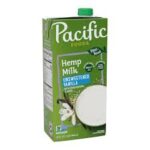
- What It Is: Plant-based milk made from hemp seeds.
- Nutrients: Contains omega-3 and omega-6 fatty acids, calcium (if fortified), and small amounts of protein.
- Notes: A hypoallergenic option suitable for children with multiple food allergies.
Coconut Milk

- What It Is: Plant-based milk made from the flesh of coconuts.
- Nutrients: Low in protein and calcium but provides healthy fats.
- Notes: Best used in moderation and in combination with other sources of calcium and protein.
Oat Milk

- What It Is: Plant-based milk made from oats.
- Nutrients: Naturally higher in carbohydrates, often fortified with calcium and vitamin D. Low in protein.
- Notes: A creamy, dairy-free option, but not ideal as the sole source of protein.
Rice Milk
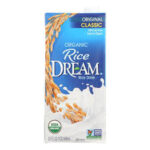
- What It Is: Plant-based milk made from rice.
- Nutrients: Very low in protein and fat but often fortified with calcium and vitamin D.
- Notes: Suitable for children with severe allergies; however, it lacks protein and fat.
Current Recommendations for Children Ages 1 - 5
The American Academy of Pediatrics (AAP) and other health organizations provide the following guidelines for milk and milk alternatives for children aged 1 to 5:
Ages 1-2 Years
- Milk Type: Whole cow’s milk is recommended due to its higher fat content for brain development.
- Daily Amount: 16-24 ounces (2-3 cups) per day.
- Alternatives: If cow’s milk is not an option, fortified soy milk is the preferred alternative due to its comparable nutrient profile.
Ages 2-5 Years
- Milk Type: Switch to low-fat (1%) or fat-free (skim) milk to limit saturated fat intake.
- Daily Amount: 16-20 ounces (2-2.5 cups) per day.
- Alternatives: Fortified soy milk remains the closest substitute. Other plant-based options (pea milk, nut milks, oat milk, etc.) can be included but should be fortified with calcium and vitamin D.
Additional Notes
- Calcium Intake: Aim for 700 mg/day (1-3 years) and 1,000 mg/day (4-5 years) through milk, dairy products, or fortified alternatives.
- Vitamin D: Ensure 600 IU/day, primarily through fortified milk or supplements.
- Protein: Children require approximately 13-19 grams of protein daily, which can come from milk, dairy alternatives, and other food sources.
- Watch for Added Sugars: Opt for unsweetened versions of plant-based milk to avoid excess sugar intake.
Big Picture
Milk and milk alternatives play a crucial role in meeting the nutritional needs of children aged 1 – 5. Cow’s milk remains the gold standard, but fortified soy milk and other options can meet nutrient requirements for children with allergies or dietary preferences. Parents should focus on providing a balance of protein, calcium, and vitamin D to support their child’s healthy growth and development.
